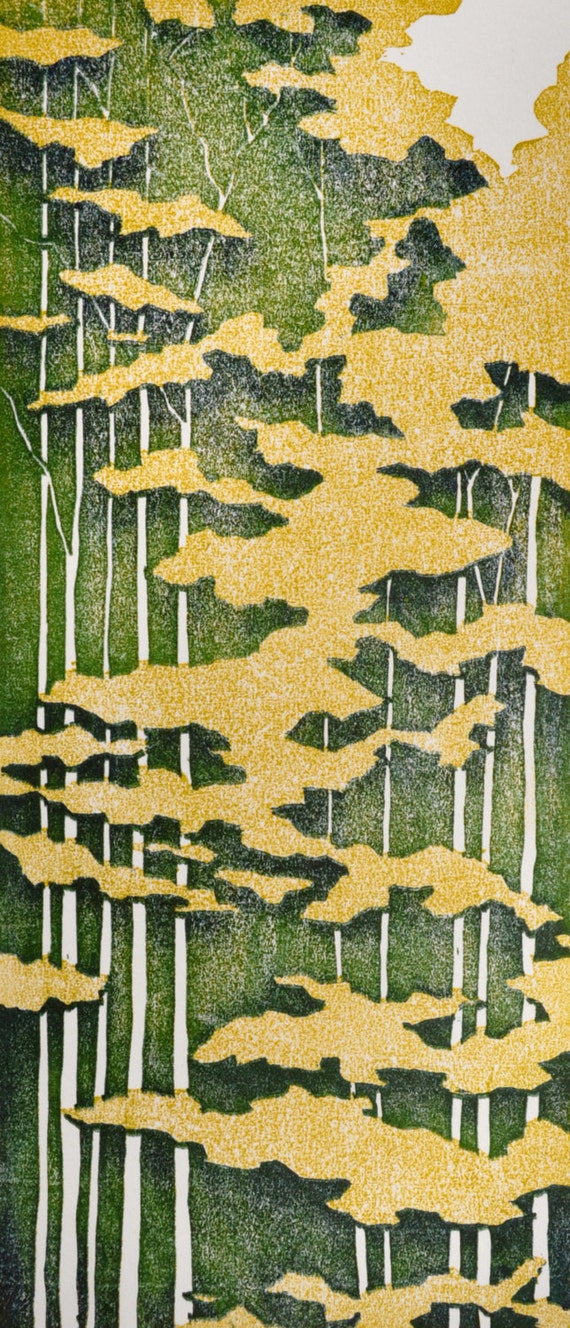
Gluing down moku hanga prints onto paper windows#
There were some areas of skipped or double size but not too bad but in my Winter climate the rooms are all very dry and trying to place them in the one unheated room with the windows open (Damper outside than inside) still caused the paper to dry too quickly-they were dry to the touch in 30-40 minutes.Īnd I think the slight puckering/unevenness is due to the drying.īut this is much better than my first try and I think all the paper is useable. Hung up they looked smooth and pretty good. I thought of buying 2-3 of these and making a jig to hold them all together so they'd function as one big brush.but I decided to wait and see how these trials go. This paper is pretty thin and I got some buckling where my thumb was used to hold it down to allow the brush to go over the paper.Įxtreme care has to be taken to try to get the edges of the strokes almost touching as if they overlap and xtra layer of size goes down.Ī bigger brush would be good. The one sheet I sized right to the edge was just as easy to handle and didn't tear. This paper is strong enough that I didn't need to leave the unprimed edge. It is a handmade Japanese washi, 45g/M2 weight and 90%Kozo(mulberry) and 10% wood pulp. I'm trying to size a fairly thin paper but that was available down the street at the local art-supply store and was practically the heaviest they had, the rest of their stock is used by bookbinders and for restoration work. He urged to leave the last few centimeters unsized so as to have a dry, strong edge to lift it up. He doesn't stack it but then picks it up carefully and hangs it up to dry sheet by sheet. The interesting advice I got from Paul was to use an old blanket under my work station to act as a size catcher-and to move the brush slowly across the width saturating the paper with warm size (it will soak thru to the blanket).

I kept all this on a warm stove/flame in a make-shift double boiler to keep the glue mixture from getting too hot.


I soaked the glue in 1/2 the water overnight, then added another 1/2 liter of boiling water in the morning, stirred it all up (it dissolved nicely) then turned up the heat and added the small amount of alum, that I had already dissolved in a small cup of very hot water. I'm using his Winter recipe 14grams of animal-skin glue (rabbit) and 5 g of powdered alum to 1L of water. Emboldened by encouraging words (and detailed instructions) from accomplished printmaker Paul Furneaux (who sizes his own paper) I decided to give it another go.


 0 kommentar(er)
0 kommentar(er)
